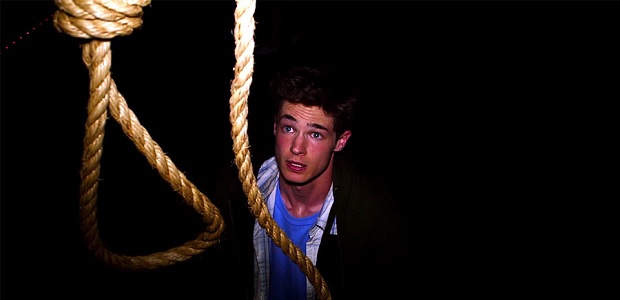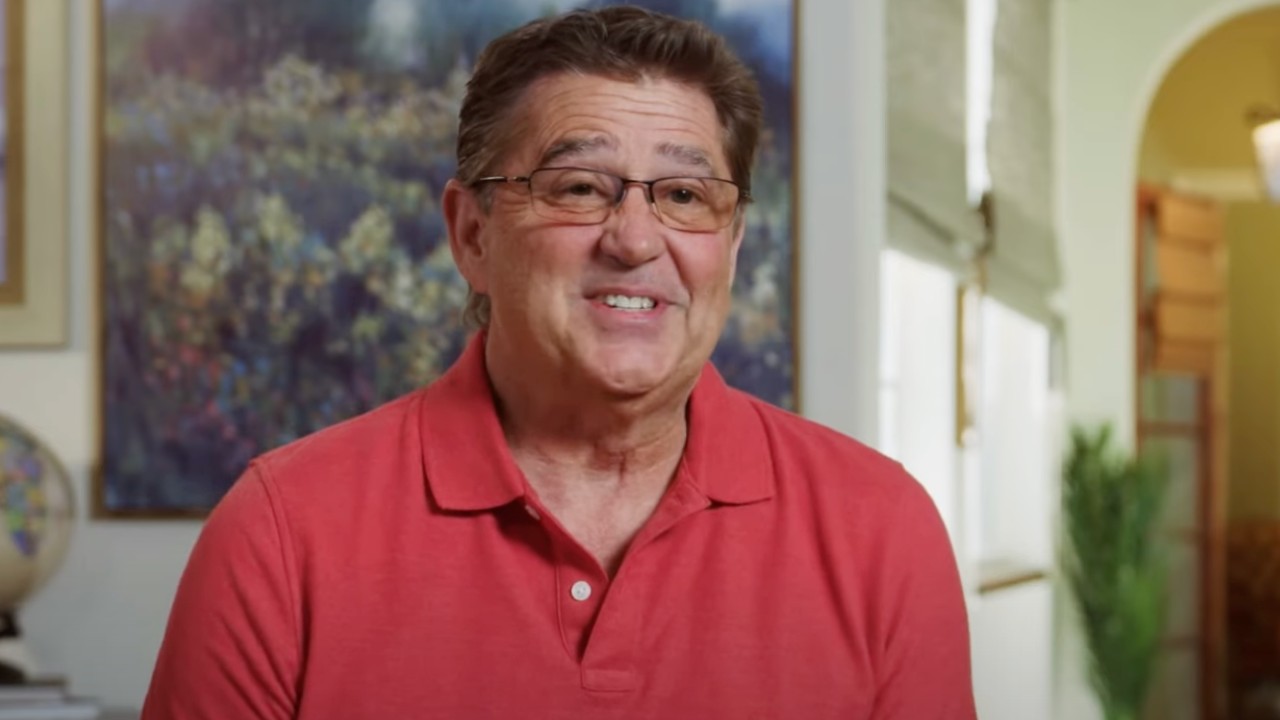Superstition rules the theater. It always has and always will. With that understanding comes the knowledge that certain customs must be observed, and others must be avoided. You don’t say “Macbeth” in the theater, you always say break a leg, and you most certainly stay away from a show that feels cursed to death. While The Gallows starts to play with these central conceits, it sadly never finishes, dooming itself to follow the most predictable of curses. In other words, it’s nothing more than found-footage fluff.
In 1993, a Nebraska high school suffered a great tragedy, as Charlie Grimille died during the fall drama production of a play called “The Gallows.” Twenty years later, at the request of a rather pushy drama student (Pfiefer Brown), the play is set to make its bow for the first time since that fateful night. That is, if the trio of mischief makers who are dead set on derailing the play (Ryan Shoos, Reese Mishler, and Cassidy Gifford) can’t get their act together and sabotage the cursed production to help one of their own avoid starring in it. Though the spirit stalking the auditorium might have a thing or two to say about the whole matter.
What upsets me the most about The Gallows is that I wanted to like it, despite my best efforts. I headed into this film ready to pan it, and by time the second act revved up, I was actually digging it a little. Some of the tension is genuine, and even some of the scares pan out in novel enough ways to break this film out of the usual horror rut. Even the finale’s ultimate revelation had elements that I really liked, and wanted to see followed up with some sort of resolution. Unfortunately, the choice to use the found footage genre eliminates the possibility for such a narrative, and instead the pieces are left on the table, expecting you to assemble them yourself. The problem is, the borders of the puzzle that is The Gallows aren’t solid enough for the audience to know they’re supposed to do that.
On top of an incomplete narrative, the traditional bane of the found footage genre known as “shaky cam” is very much alive in The Gallows. Even worse are the moments where the screen is filled with images that you would never get away with outside of an annoying Facebook photo. If you like those photos your friends post to show off everyone’s shoes in a circle, you’ll love the sequence where our cast is arguing over what to do next and all you see are, wait for it, their shoes! Even the comeuppance of a rather nasty character is robbed of any sort of joy and execution, due to the film’s chosen format.
The one thing that directors Travis Cluff and Chris Lofing do with the found-footage format that actually redeems it a little is that they cut back and forth between cell phone footage and handheld camera footage. Through this device, we get to see what happens when they split characters up and trap them behind obstacle, but it’s ultimately a self defeating gesture as it ruins the found footage conceit that they chose to use. If they had recorded two different versions of events, and shown both versions one after the other in their entirety, it would have made sense to use found footage formatting. The way The Gallows plays out in its current form would have been better off filmed as a straight narrative, without the gimmick.
The Gallows dabbles with gimmick and thematic storytelling, and mashes the two up into one subpar package. A good movie could be made out of the raw materials this film sprang from, but that film will never happen. If squandering an interesting premise with shoddy execution isn’t a crime worth hanging someone’s career over, then I don’t know what is.

Mike Reyes is the Senior Movie Contributor at CinemaBlend, though that title’s more of a guideline really. Passionate about entertainment since grade school, the movies have always held a special place in his life, which explains his current occupation. Mike graduated from Drew University with a Bachelor’s Degree in Political Science, but swore off of running for public office a long time ago. Mike's expertise ranges from James Bond to everything Alita, making for a brilliantly eclectic resume. He fights for the user.











